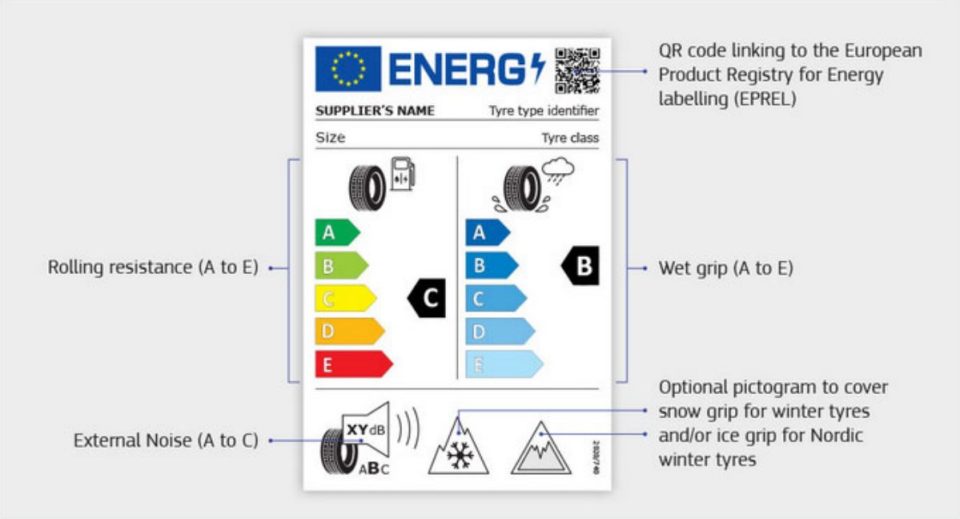
Explained: New tyre designs that will come into effect from Oct 1

The Ministry of Road Transport and Highways (MoRTH) has issued a notification which mandates requirements of rolling resistance, wet grip and rolling sound emissions for tyres falling under classes C1 (passenger cars), C2 (light truck) and C3 (truck and bus).
The requirements are defined in the Automotive Industry Standard (AIS) 142:2019. The said tyres shall meet the wet grip requirements and Stage 2 limits of rolling resistance and rolling sound emissions, as specified in this AIS.
With this regulation, India will be aligned with UNECE (United Nations Economic Commission for Europe) regulations.
Also read: Gadkari says roads in this state can match America’s roads by 2024
As per the notification, new designs of tyres to be fitted on motor vehicles and falling under Class C1, C2 and C3 as applicable as per AIS 142 should be implemented from October 1, 2022. And for the existing tyre designs, the date for implementation is April 1, 2023 (for rolling resistance and wet grip). For less rolling sound, the new rule comes into effect from June 1, 2023.
The new norms will improve safety standards as well as fuel efficiency.
Fuel efficiency
The rolling resistance of tyres has an impact on fuel efficiency; wet grip performance influences the braking performance of tyres under wet conditions and promotes vehicular safety. The rolling sound emission relates to the sound emitted from the contact between tyres in motion and the road surface.
According to tyre manufacturer Goodyear, tyres account for up to 20% of your vehicle’s fuel consumption and choosing tyres with a high fuel efficiency rating will give you more miles from your tank and lower your CO2 emissions. Depending on the tyre’s rolling resistance, its fuel efficiency will range from class A, which indicates the best fuel economy all the way through to class E, delivering the worst fuel economy.
What are new tyre designs?
As per the new rules, there will be labelling of tyres just like it is done in Europe. According to European Union (EU), the scale of the label classes for wet grip and rolling resistance has five classes, designated with the letters A to E.
According to Goodyear, a wet grip is the tyre’s ability to stick to the road in wet conditions. The EU rating focuses only on one aspect of wet grip – the wet braking performance of the tyre. The performance is graded between class A and class E. Tyres with a high wet grip rating will stop more quickly on wet roads when full brakes are applied. In an emergency situation, a few metres can make all the difference.
Also read: 75-km road in 5 days: NHAI aims to set Guinness record
In India, the wet grip performance will be based on a procedure that compares either peak brake force coefficient (PBFC) or mean fully developed deceleration (MFDD) against values achieved by a standard reference test tyre (SRTT). The relative performance shall be indicated by a wet grip index (G), as per AIS.

Noise rating
As per the new norms, the exterior noise a tyre generates while driving will be considered.
By choosing a tyre with a good noise rating you can lower the impact of your driving on the surrounding environment. The noise level is sorted into classes A, B or C. The rolling noise of the tyre is measured in decibels and the exact number is shown on the bottom part of the label. Tyres with a low noise level have between 67 and 71 dB. The highest level shows sound waves between 72 and 77 dB. An increase of just a few decibels represents a big difference in noise levels. In fact, a difference of 3dB doubles the amount of external noise the tyre produces, according to Goodyear.
In Europe, the Tyre Labelling Regulation has been in place since 2012. The tyre manufacturers have the choice of either putting a sticker on the tyre tread or including a printed label with each delivery of a batch of identical tyres to the dealer.
This provides consumers across Europe with essential information on fuel efficiency, safety, and noise by detailing the tyres’ rolling resistance, wet grip, and external rolling noise, said European Tyre and Rubber Manufacturers’ Association.
“This labelling system provides consumers with transparent and objective information about the quality of the tyres they buy. As a result, they can make better-informed choices taking into consideration their type of driving, the climate and road conditions they are likely to encounter,” it added.
Label-rated tyres in India
Last year, Ceat Tyres launched label-rated tyres in India in line with international rating systems prevalent in the tyre industry to help customers make informed decisions before buying tyres for their vehicles.
Under the initiative, Ceat introduced performance indicator ratings for its premium offerings – Fuelsmarrt and SecuraDrive range of tyres. The ratings are based on important tyre performance indicators like rolling resistance, wet grip and tyre noise level, the company said in a statement.
A higher rating of rolling resistance indicates better fuel-saving while higher wet grip ratings indicate solid braking capability of the tyre and a lower noise level connotes a more comfortable drive, it added.
(With inputs from agencies)

